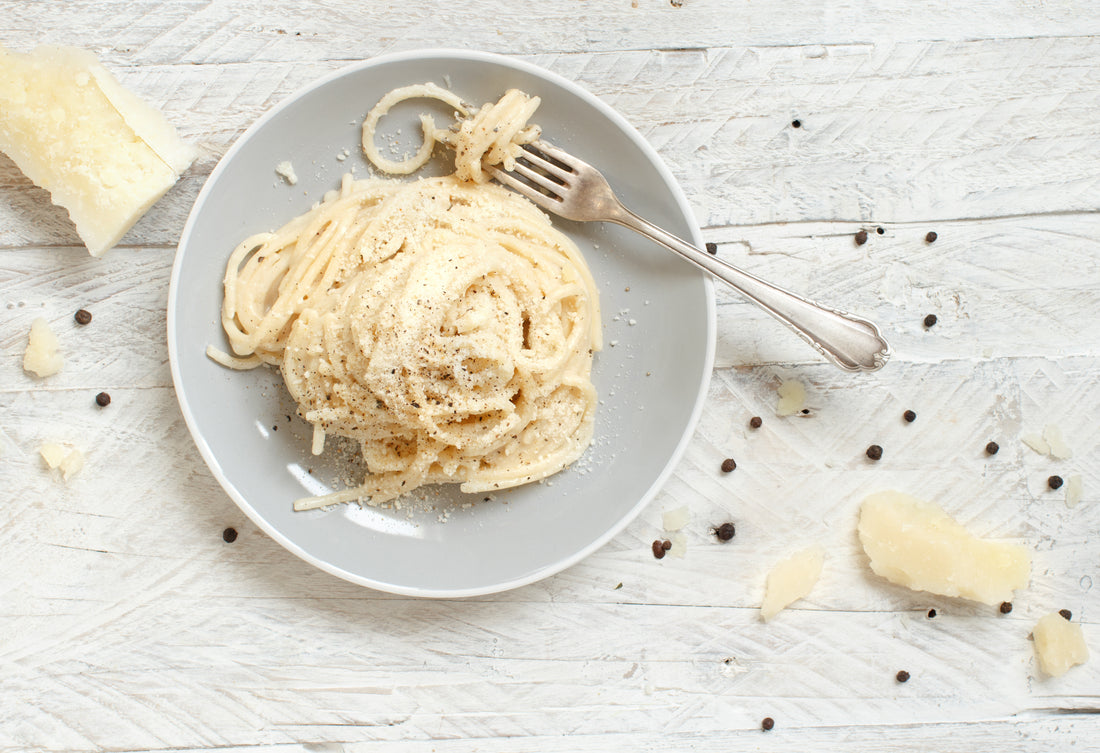Made with just 3 ingredients in under 30 minutes. We love this dish because it shines a spotlight on the quality of the ingredients used and skill, patience, and. sensibilities of the chef preparing it.

So what is cacio e pepe? Cacio e pepe is a Roman pasta dish that literally means ‘cheese and pepper' in Italian. The allure of this is rooted in its simplicity and the intensity of its flavours and textures. When made just right, the cheese melts and clings to the pasta, creating a creamy sauce, and the black pepper is sharp, with an unforgettable and addictive bite that steals the show. Before getting into how to prepare this dish, it's important to pay attention to the ingredients used.
The Pasta: Spaghetti To nail this beloved Roman pasta dish, long noodles are required. Tonnarelli is great if you can find it (spaghetti alla chitarra is similar, and slightly more widely available in the UK), but honestly, spaghetti will do just fine.
The Pepper: Fresh Premium Black Peppercorn from Wayanad. Given the fact that it's one of only three ingredients powering this dish, I strongly suggest using a premium black peppercorn for this recipe. After preparing this dish dozens of times over the years and sampling many variation, I've found the best black pepper to use is Wayanadan or Tellicherry Peppercorns from the Kerala region of India like the ultra fresh, farm-direct Organic Wayanadan Black Pepper from Vanille Vanille - a gourmet online spice store that has set up shop in the UK.
The Cheese: Pecorino Romano Traditionally made with sharp, salty Pecorino Romano, but some substitute or create a blend with Parmigiano Reggiano or Grana Padano. Regardless of which cheese is selected, it’s vital to grate the cheese as finely as possible and keep it as close to room temperature as possible to reduce the difference in temperature between it and the pasta.
Hacks / Adulterations: Adding Fat To get this dish deliciously creamy some like to cheat by adding oil, butter, or even cream...something any self-respecting Roman would scoff at. Fat dulls the flavour of the cheese and pepper, so we recommend to avoid using if possible – believe me it’s well worth it.
The Method: Much like risotto, perfecting Cacio e Pepe takes time and some practice. Temperature is crucial: not only must the cheese be at room temperature, but the cooking water used shouldn't be too hot, or it will cause the cheese to clump and coagulate. Allowing the cooked pasta to cool for a minute before adding them to to a cool pan with the sauce. To bring out maximum flavour, toast whole black peppercorns before crushing, which will accentuate its flavour beautifully. The proportions of cheese, water and pepper used can vary according to taste (some like it rich and peppery, while others prefer a lighter, and more delicately mild rendition). Fortunately, perfecting this dish to suit your palate is half the fun and it usually turns out tasting delicious regardless
Need more detail?
Ingredients, Cooking Instructions, and Nutritional Information:
Vanille Vanille Recipes on Whisk: Cacio e Pepe
Made With: Fresh Premium Black Peppercorn from Wayanad
